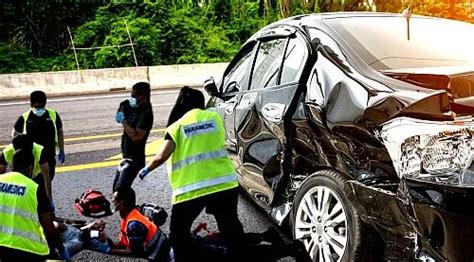The sound of screeching tires, the smell of burned rubber, and the sight of crumpled metal - these are the terrifying hallmarks of a car crash. Every year, millions of people are involved in car accidents, resulting in injuries, fatalities, and immense financial losses. But what causes these crashes, and more importantly, how can they be prevented? In this comprehensive guide, we’ll delve into the complex world of car crashes, exploring the root causes, the role of human error, and the latest technological innovations designed to prevent these tragedies.
Understanding the Root Causes of Car Crashes
Car crashes are rarely the result of a single factor; instead, they often involve a combination of human, vehicle, and environmental elements. Some of the most common causes of car crashes include:
- Distracted driving: With the rise of smartphones and other in-vehicle technologies, distracted driving has become a major concern. Texting, browsing, or even talking on the phone can divert a driver’s attention, increasing the risk of a crash.
- Speeding: Excessive speed can reduce a driver’s reaction time, making it more difficult to avoid obstacles or stop in time.
- Drunk driving: Driving under the influence of alcohol or other substances can impair a driver’s judgment, reaction time, and coordination.
- Reckless driving: Aggressive behaviors like tailgating, weaving in and out of lanes, and running red lights can significantly increase the risk of a crash.
- Vehicle maintenance: Poorly maintained vehicles can experience mechanical failures, such as brake or tire failures, which can lead to a crash.
- Weather conditions: Inclement weather, such as rain, snow, or fog, can reduce visibility and traction, making it more challenging to control a vehicle.
The Role of Human Error
Human error is a significant contributor to car crashes. Drivers may make mistakes due to fatigue, emotional stress, or lack of experience. Some common examples of human error include:
- Failure to yield: Failing to yield to other drivers, pedestrians, or cyclists can lead to collisions.
- Running red lights or stop signs: Disregarding traffic signals or signs can result in T-bone crashes or other types of accidents.
- Turning errors: Incorrectly judging the speed or distance of other vehicles can lead to turning errors, such as failing to yield to oncoming traffic.
Technological Innovations for Collision Prevention
In recent years, the automotive industry has witnessed significant advancements in safety technologies designed to prevent or mitigate car crashes. Some of these innovations include:
- Forward collision warning systems: These systems use cameras, radar, or lidar to detect potential collisions and alert the driver.
- Automatic emergency braking: This technology can automatically apply the brakes to prevent or reduce the severity of a collision.
- Lane departure warning systems: These systems monitor the vehicle’s position within the lane and alert the driver if they drift out of their lane.
- Blind spot detection: This technology uses sensors to detect vehicles in the driver’s blind spot and alert them to potential hazards.
Prevention Strategies
While technological innovations are crucial in preventing car crashes, there are also several strategies that drivers can employ to reduce their risk of being involved in an accident. These include:
- Defensive driving: Anticipating the actions of other drivers and being prepared to react can help prevent crashes.
- Following traffic laws: Obeying speed limits, stopping at red lights and stop signs, and yielding to other drivers can significantly reduce the risk of a crash.
- Staying alert and focused: Avoiding distractions, getting enough sleep, and taking regular breaks can help drivers stay alert and focused on the road.
- Maintaining vehicle safety: Regularly checking and maintaining vehicle safety features, such as brakes, tires, and airbags, can help prevent mechanical failures.
Real-World Examples of Collision Prevention
Several countries and cities have implemented innovative collision prevention strategies, resulting in significant reductions in car crashes and fatalities. For example:
- Sweden’s Vision Zero initiative: This program aims to eliminate all road fatalities and injuries by implementing strict safety standards, improving road infrastructure, and promoting safe driving practices.
- Australia’s Towards Zero campaign: This initiative focuses on reducing road fatalities by promoting safe driving behaviors, improving vehicle safety, and enhancing road infrastructure.
Conclusion
Car crashes are a complex and multifaceted issue, involving human, vehicle, and environmental factors. By understanding the root causes of car crashes and employing prevention strategies, drivers can significantly reduce their risk of being involved in an accident. As technological innovations continue to evolve, we can expect to see even more effective collision prevention systems in the future. Until then, it’s essential for drivers to remain vigilant, follow traffic laws, and prioritize safe driving practices to minimize the risk of a car crash.
What are the most common causes of car crashes?
+The most common causes of car crashes include distracted driving, speeding, drunk driving, reckless driving, vehicle maintenance, and weather conditions.
How can I prevent a car crash?
+To prevent a car crash, follow traffic laws, stay alert and focused, maintain vehicle safety, and employ defensive driving strategies.
What are some technological innovations for collision prevention?
+Some technological innovations for collision prevention include forward collision warning systems, automatic emergency braking, lane departure warning systems, and blind spot detection.
By understanding the causes of car crashes and implementing prevention strategies, we can work towards creating a safer and more responsible driving culture. Remember, safety is a shared responsibility, and every driver has a role to play in preventing car crashes.


